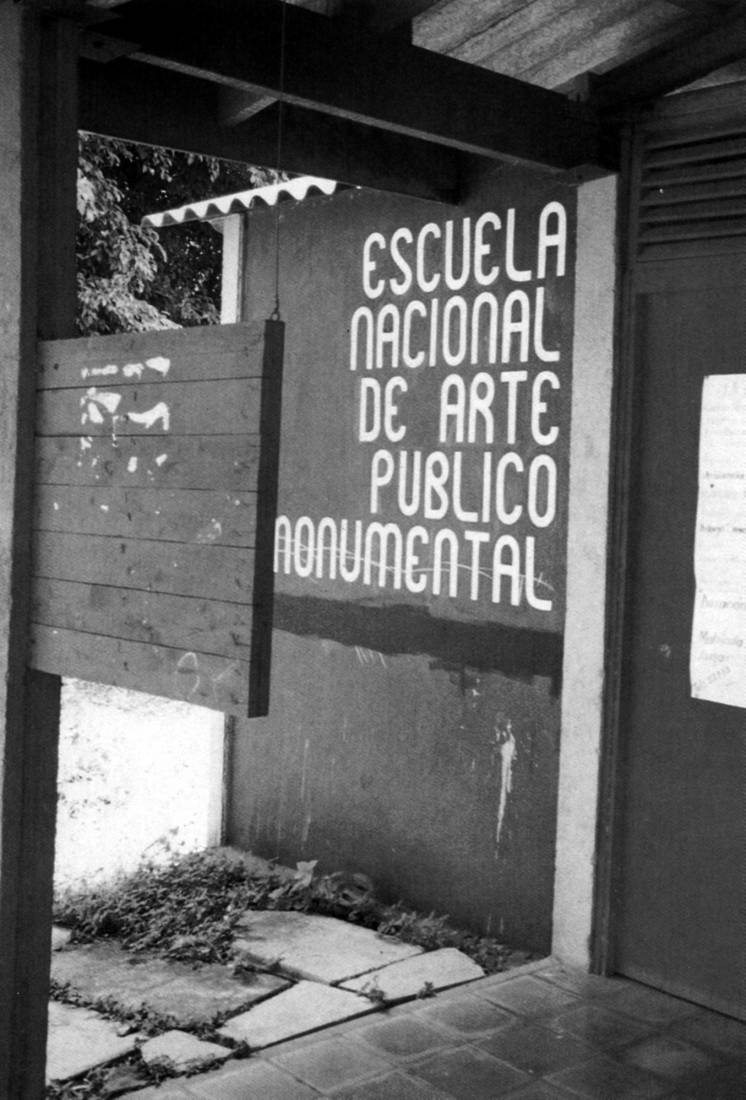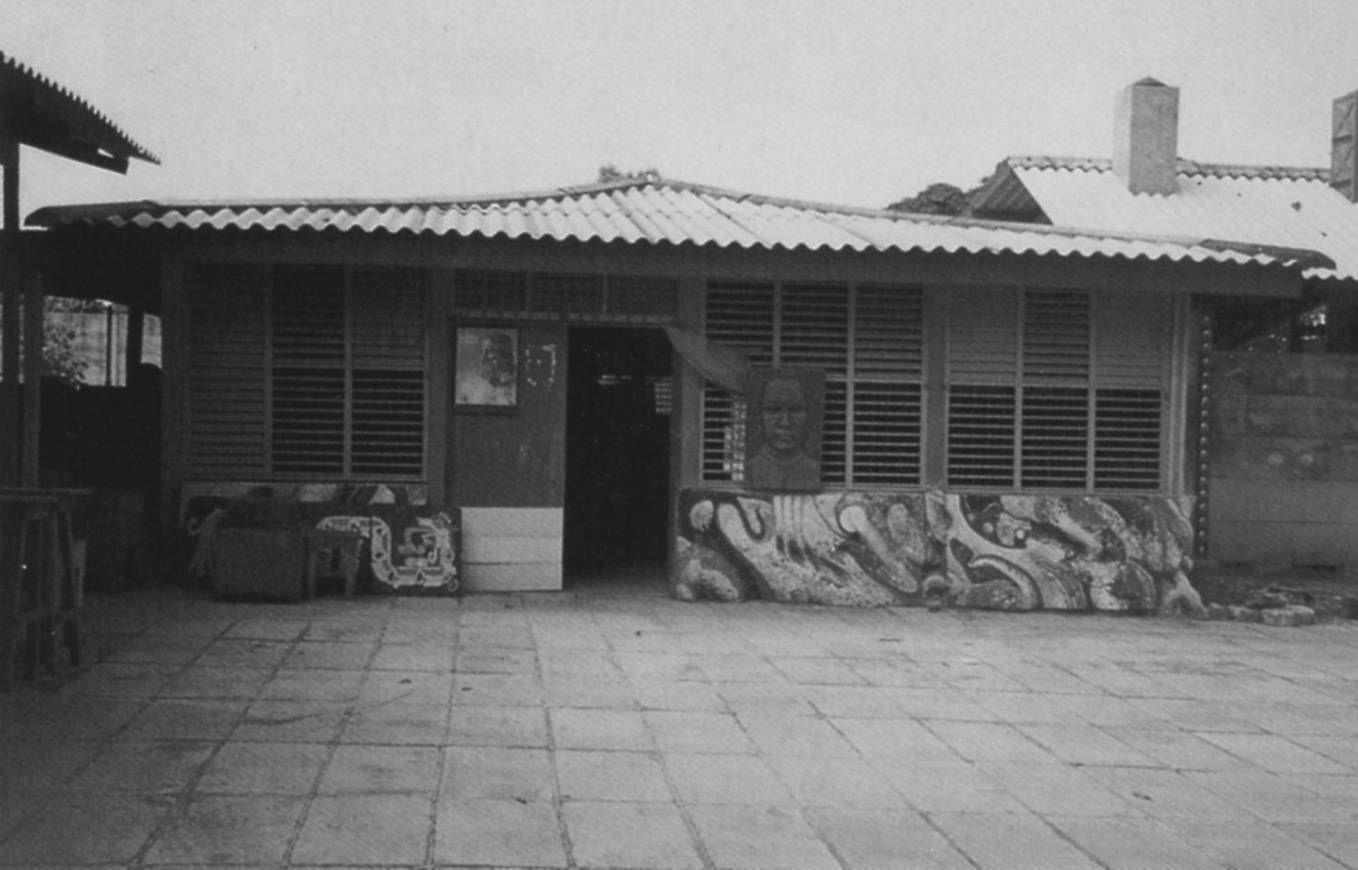Sergio Michilini, ein Partisan des politischen Muralismus der Jahrtausendwende
Von Alex Winiger, 2017
Der aus Norditalien stammende Maler ist von der 1968er-Studentenbewegung geprägt. 1948 geboren studierte er um 1970 in Mailand und Florenz Kunst. Damit ist er ein eher typischer Vertreter seiner Generation. Untypisch ist sein Umgang mit der künstlerischen Tradition. Er suchte nicht den ästhetischen Bruch wie viele damalige Kunststudienabgänger. Hingegen wandte er sich der Basisarbeit zu, indem er lehrte, Künstlergruppen und Schulen gründete und das traditionelle künstlerische Handwerk der Malerei, des Mosaiks und der Bildhauerei förderte und pflegte. Es ist somit kein Zufall, dass er in den 1970er-Jahren mit Vertretern des mexikanischen Muralismus in Kontakt kam und zusammenarbeitete. Michilinis Arbeitsweise und manches formale Element seiner Bilder lassen sich aus dieser Begegnung ableiten.
Im revolutionären Nicaragua der 1980er-Jahre war er einerseits mit einer massiven Präsenz des Graffiti, anderseits mit dem Analphabethismus – Voraussetzung eines funktionalen Muralismus – konfrontiert. Michilini führte das Handwerk der Wandmalerei von zwei Seiten her ein: als siqueirianischen Muralismus (raumgreifenden Propagandaträger mit dynamistischen Elementen) und aus der italienischen Tradition des Freskos und des Mosaiks heraus. Die von ihm und dem nicaraguanischen Maler Leonel Cerrato gegründete Schule ENAPUM-DAS lehrte diese Elemente und das praktische Knowhow lokalen Künstlern und internationalen Brigadisten in den Jahren des Contrakriegs. Hand in Hand arbeiteten panamensische, chilenische, mexikanische, nordamerikanische und europäische Muralisten an gemeinsamen Projekten. Michilini operierte unter anderem als Koordinator und organisierte Material und finanzielle Unterstützung.
In den Jahren nach der politischen Wende im kriegsmüden Nicaragua, als gleichzeitig auch die internationale Öffentlichkeit allmählich das Interesse an diesem entlegenen und armen Land verlor, lancierte Michilini neue langfristig angelegte Projekte wie den Zyklus im CEMOAR. Obwohl in der Folge sowohl die sozialen Projekte als auch die Gemälde selber allmählich verblassten, blieb er bis heute im Land und markiert auch verbal Distanz zu seinem Herkunftsland («Vista la impossibilità di poter lavorare dignitosamente e onoratamente in Italia, attualmente vive in esilio a Managua […]»). Dies darf nicht darüber hinwegtäuschen, dass er auch in Italien namhafte Spuren hinterlassen hat, vorallem in der Region Varese, in der sich das Herz der Bewegung der bemalten Dörfer Italiens befindet. Und auch die virtuelle Präsenz Michilinis hat ihre Basis in Varese. Das Newsportal Varese News beherbergt seinen Blog «La bottega del pittore», wo heute die meisten Informationen und eine Unzahl von Bildern zum nicaraguanischen Muralismus zu finden sind.
ENAPUM-DAS, mural school in Nicaragua, 1985–89
«The first such state-sponsored specialized school in the world (the Taller Siqueiros, or Siqueiros Workshop, in Cuernavaca was no longer active in the 1980s), the Mural School was given as its full name the David Alfaro Siqueiros National School of Monumental and Public Art (Escuela Nacional de Arte Público y Monumental David Alfaro Siqueiros, or ENAPUM-DAS). While emphasizing mural painting, it included in its curriculum and practive sculpture-painting (escultura-pintura), clay and cement work in high relief, and mosaics, the natural-color stones for which are found in Nicaragua. Conceived shortly after [Sergio] Michilini's arrival in 1982, the Mural School officially opened its doors in 1985, with Leonel Cerrato as director, to students both Nicaraguan and foreign (from seven different counties), and survived until 1988–89, when government funding for the arts was radically cut. The school was housed in modest, specially enlarged premises adjoining the Ministry of Culture, an ex-Somocista hacienda known as El Retiro, now [1995] serving the Ministry of Sports, which the new government considers more important than art. […]


In the tree years of its existence, the school trained many of the muralists currently most active, notably the Nicaraguan Federico Matus and members of the Colectivo Boanerges Cerrato in Estelí. […] The formation of the school went hand-in-hand with the most ambitious practical application: the sixteen-part cycle in the Church of Santa María de los Angeles in the poor Managua barrio of Riguero, inaugurated in July 1985, the same day as the Mural School. The cycle achieved international renown and attracted visitors from abroad. […] After the demise of the school, on 19 September 1989, twelve Nicaraguan muralists, meeting in the Praxis Gallery, constituted themselves as a sociopolitically motivated Unión de Artistas Público-Monumentales (Union of Artists in Public and Monumental Art). But this group seems to exist only on paper, and the more active association of muralists at present is a diffuse international one calling itself TALAMURO (Taller Latinoamericano de Muralistas, or Latin American Workshop of Mural Painters), of which Michilini is coordinator.
To compensate for the loss of the school and to maintain the impetus of the mural movement, Michilini initiated a scheme even larger in scale than the church cycle, with murals by other Italians, Nicaraguans, and internationalists (twenty artists from ten different countries, seven of them in Latin America, are represented at the time of writing), mainly in Latin America, in the Monseñor Oscar Arnulfo Romero Spiritual Center (CEMOAR), a retreat, study, and conference center near Managua.[…]»
(Kunzle 1995, p. 45–46)
Literatur:
- David Kunzle, The murals of revolutionary Nicaragua, 1979–1992, Berkeley, Los Angeles, London, 1995.
- David Craven, Art and Revolution in Latin America, 1910–1990, New Haven / London, 2002.
mural.ch enthält zurzeit:
- 959 Werkgruppen und 12748 Einzelwerke
- 9196 Personeneinträge
- 3392 Publikationen
- 4483 externe Verweise
- 39406 interne Verlinkungen
Vitrine
- Werke in Ihrer Nähe anzeigen
- Zufallsauswahl generieren
Zuletzt bearbeitet:
- 2025-02-14 00:08:51 / Mit Aarburg verbunden... : Ein herzliches Dankeschön an Peter Schärer, Aarburger Neujahrsblatt 2020
- 2025-02-14 00:08:09 / Mit Aarburg verbunden... : Ein herzliches Dankeschön an Peter Schärer, Aarburger Neujahrsblatt 2020
- 2025-02-14 00:07:39 / Hans von Matt, Schreitender Sähmann, 1942, Guthirtkirche (Ambo), Aarburg AG, Schweiz
- 2025-02-14 00:02:26 / Richard Seewald, Chorwandbild, 1944, Guthirtkirche, Bahnhofstrasse 51, Aarburg AG, Schweiz
- 2025-02-13 23:47:16 / Richard Seewald, Über Freiheit, Bindung und Zwang in der kirchlichen Malerei, Christliche Kultur, 6. Jg. (1942), Nr. 38–40
- 2025-02-13 23:32:03 / Otto Dreyer, Guthirtkirche, 1942, Bahnhofstrasse 2, Aarburg AG, Schweiz
- 2025-02-13 23:13:53 / Peter Schärer, Der Gute Hirte von Aarburg : vom Werden und Verbergen kirchlicher Kunst, Aarbur[…]
- 2025-02-13 23:13:20 / Peter Schärer
- 2025-02-13 23:11:24 / Peter Schärer, Der Gute Hirte von Aarburg : vom Werden und Verbergen kirchlicher Kunst, Aarburger Neujahrsblatt 2017
- 2025-02-13 14:32:43 / Giuseppe Scartezzini, Christophorus. Mädchen mit Blumen, 1933, Haus Gentsch (Tor; neben Haustür), Stationsweg 7, Siebnen SZ, Schweiz
- 2025-02-13 11:16:10 / Aarburg, Kath. Pfarrkirche Guthirt, Online-Inventar des Kantons Aargau, SAK-AAB003 Aarburg, Kat[…]
- 2025-02-13 11:15:57 / Aarburg, Kath. Pfarrkirche Guthirt, Online-Inventar des Kantons Aargau, SAK-AAB003 Aarburg, Kath. Pfarrkirche Guthirt, 1941-1942 (D[…]
- 2025-02-10 23:06:52 / ENAPUM-DAS, mural school in Nicaragua, 1985–89 «The first such state-sponsored specialized school in the world (the Taller Siqueiros, or Siqueiros Workshop, in Cuernavaca was no longer acti[…]
- 2025-02-10 23:05:52 / ENAPUM-DAS (students), «The first such state-sponsored specialized school in the world (the Taller Siqueiros, or Siqu[…]
- 2025-02-10 21:58:06 / Exomusée: BustArt
- 2025-02-10 21:57:36 / BustArt
- 2025-02-10 21:57:22 / BustArt, Time out, 2021, Rue Le Corbusier 21, Le Locle, Suisse
- 2025-02-10 21:54:44 / Exomusée: Onur Dinç
- 2025-02-10 21:54:14 / (Onur, Barry) Khontkar (Dinç, Allen)
- 2025-02-10 21:52:59 / Khontkar, Origin, 2021, Rue Jehan Droz, Le Locle, Suisse
- 2025-02-10 21:50:57 / Exomusée: Oakoak
- 2025-02-10 21:50:32 / Oakoak
- 2025-02-10 21:50:15 / Oakoak, Facéties urbaines, 2021, Le Locle, Suisse
- 2025-02-10 21:47:46 / Exomusée: Nespoon
- 2025-02-10 21:47:04 / Nespoon
